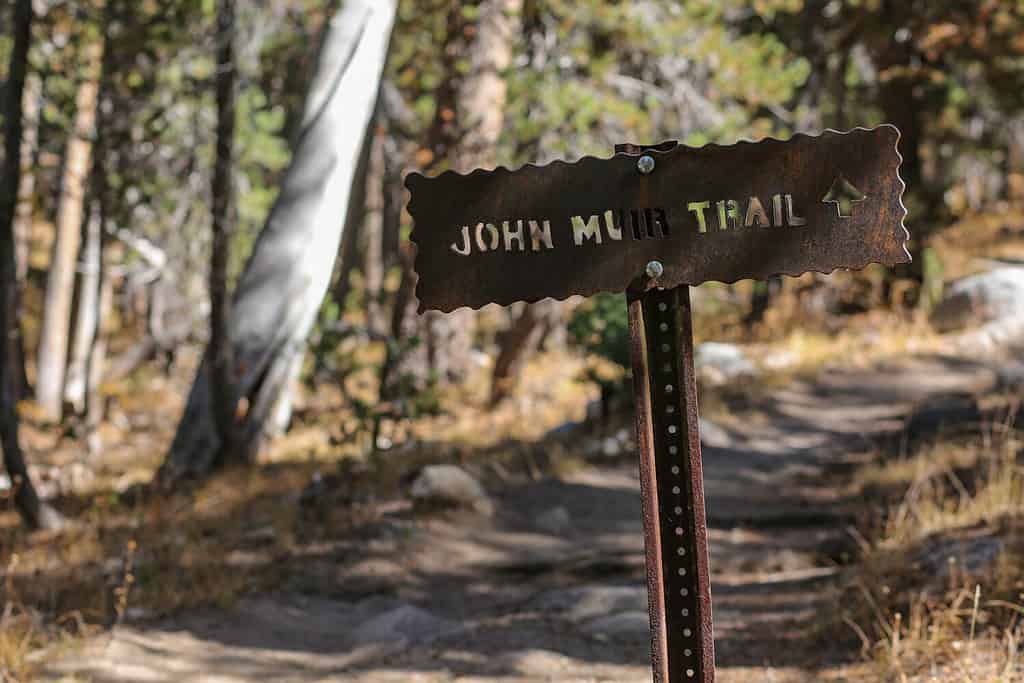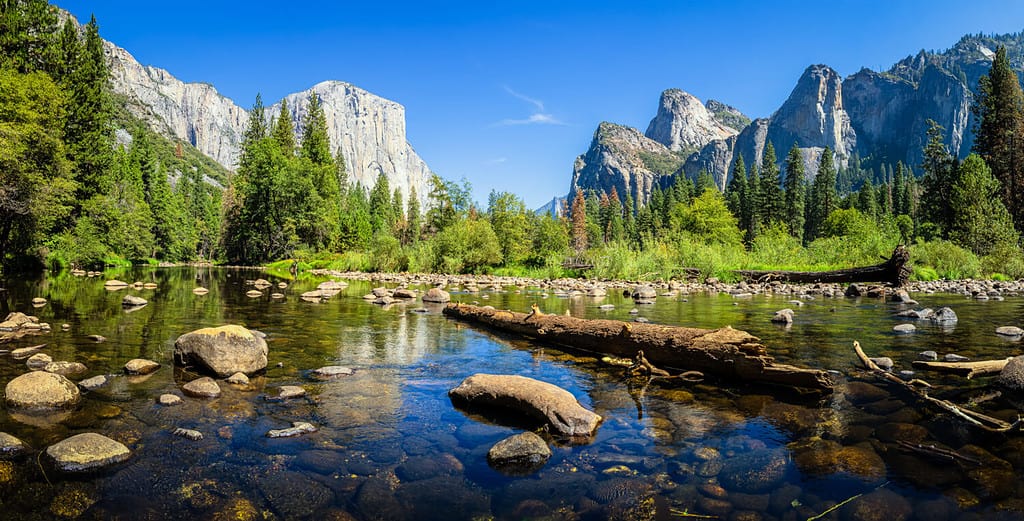Yosemite National Park is home to some of the most adventurous trails and stunning views that you can find in California’s Sierra Nevada mountains. With over 25 waterfalls located throughout Yosemite, the national park brims with hidden gems in every nook and cranny. Yosemite’s best-kept secret is none other than the breathtaking Vernal Falls. Vernal is an epic 317-foot waterfall tucked away along the meandering Merced River. Due to its 3,327-foot elevation, Vernal Falls cannot be seen from the valley floor. Fortunately, several gorgeous hiking trails provide jaw-dropping scenes of the picturesque waterfall. It’s a must-see destination that should be among the first places to see when visiting the expansive national park.

Years of erosion have smoothed the granite bedrock located throughout the national park.
©AprilS1975/Shutterstock.com
The Geology of Vernal Falls
Vernal Falls is an enthralling attraction, millions of years in the making. The unique landscape of Yosemite National Park is a product of glacial erosion. Roughly one million years ago, glaciers began to form at the peaks of the Sierra Nevadas. As the glaciers began to melt, they transformed the national park and eventually created rivers that flow into waterfalls. Years of erosion sculpted the granite bedrock and molded the national park’s iconic landforms. Vernal Falls formed where the powerful Merced River streams over the edge of a gargantuan granite cliff. Vernal’s 240-foot drop makes it one of the most powerful waterfalls in Yosemite.

The John Muir Trail is one of several hiking paths that lead to beautiful views of Vernal Falls.
©Logan Bush/Shutterstock.com
Hiking to Vernal Falls
Multiple different trails provide unique viewing experiences of Vernal Falls. The Mist Trail is the most popular option, offering an up-close look at both Vernal and Nevada Falls. This hike is approximately two miles round-trip and offers close encounters with two of Yosemite’s most famous waterfalls. It begins outside the Happy Isles Nature Center and leads directly to the Vernal Fall Footbridge. As you traverse a thriving forest to reach the base of Vernal Falls, you will be showered in mist pouring from the nearby waterfall. The hike along the Mist Trail typically takes about an hour, so it’s easily accessible for beginners.
More Challenging Options
If you’re looking for a more adventurous path, the hike to the top of Vernal Falls is roughly two and a half miles in each direction. It should take about three hours in total but is quite challenging and demanding. As you continue along the trail, you will reach the top of Nevada Falls and the mesmerizing Emerald Pool. The beautiful green lake is one of the most quaint spots in Yosemite and is well worth the added journey. The further you go, the more strenuous the trek, as you must ascend a series of granite steps to reach the summit of Nevada Falls.
The park typically closes the trail during December and January since the steps become engulfed in snow and ice. Should you visit Yosemite during Winter, the John Muir Trail is a stunning option that provides an alternate route to the top of the waterfall. The 211-mile hike would take you over three weeks to traverse, but you can start your journey at the Clark Point cutoff, which leads directly to Vernal Falls.
The Panorama Trail is yet another challenging path that offers a distinct sight of Yosemite’s most epic waterfall. The 8.5-mile hike is one of the longer courses in the national park, but the reward is simply awe-inspiring. As you descend into the valley, you will be greeted with bird’s-eye views of Nevada and Vernal Falls. Only the most seasoned adventurers should attempt the approximately six-hour-long hike.
Tips for Your Visit
Here are some essential tips for visiting Vernal Falls to ensure a safe and entertaining journey.
- Stay hydrated: Temperatures can reach over 90 degrees during summer months so be sure to bring plenty of water and take frequent breaks to beat the heat. Even if you visit Yosemite at the height of a snowstorm, hiking trails can be extremely arduous and physically demanding. Plan to carry an ample supply of water, regardless of when you plan your visit.
- Swimming is prohibited: The fast-paced current and freezing temperatures of the Merced River make it unsuitable for swimming or wading. The pools formed at the beds of waterfalls are also off-limits, as several fatalities have occurred over the years.
- Get an early start: Yosemite National Park has become a popular tourist destination in recent years, so starting your day early is a great way to beat the crowd. Arriving early could make a huge difference, as parking is extremely limited throughout the national park.
- Hike with caution: As previously mentioned, trails will get icy and hazardous during the Winter. Be sure to wear the proper hiking gear and use your best judgment when venturing off the beaten path.
- Keep the park clean: Do your part in preserving Yosemite’s beautiful landscape by picking up after yourself and throwing away any trash found on trails. Even the smallest piece of plastic can disrupt the national park’s delicate ecosystem, so make sure to help keep the park clean.

The sun shines bright during the spring and summer months in Yosemite.
©Nyokki/Shutterstock.com
When to Visit Yosemite
The best time of year to visit Yosemite is between late April and May when waterfalls are at peak flows and temperatures are just right. Most people tend to visit Yosemite during the summer months, meaning the congregation of tourists can diminish the tranquility of the national park. By traveling during April or May, you can beat the summer crowds and witness the gorgeous blooming of wildflowers. Despite the presence of snow at higher elevations, most trails will remain open. Regardless of when you choose to visit, it’s essential to check out the breathtaking Vernal Falls. There’s nothing quite like standing beneath a 300-foot waterfall as the sun’s rays pass through the giant sequoias.
Yosemite National Park is defined by its epic cascading waterfalls and stunning granite monoliths. Vernal Falls is undoubtedly at the forefront of the park’s serene beauty, making it a must-visit location for hiking enthusiasts around the globe. Whether you visit during the summer for a tranquil and sunny experience, or during the fall for a colorful, breathtaking expedition, Yosemite’s Vernal Falls should be the first destination on your itinerary.
Thank you for reading! Have some feedback for us? Contact the AZ Animals editorial team.








